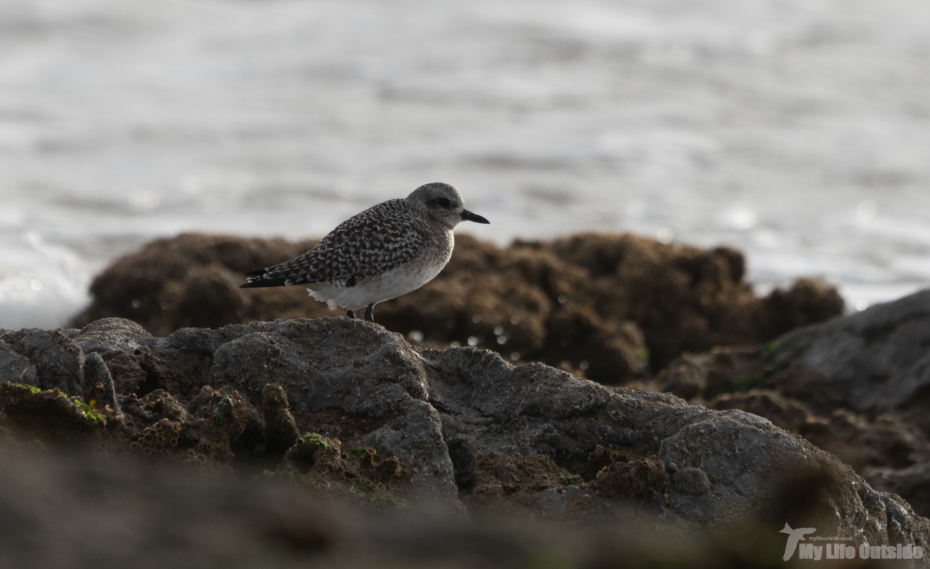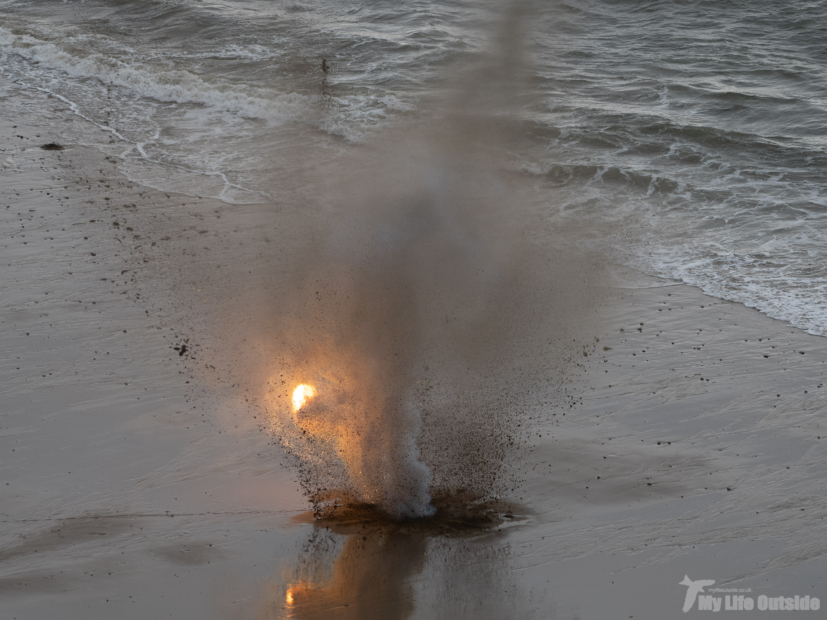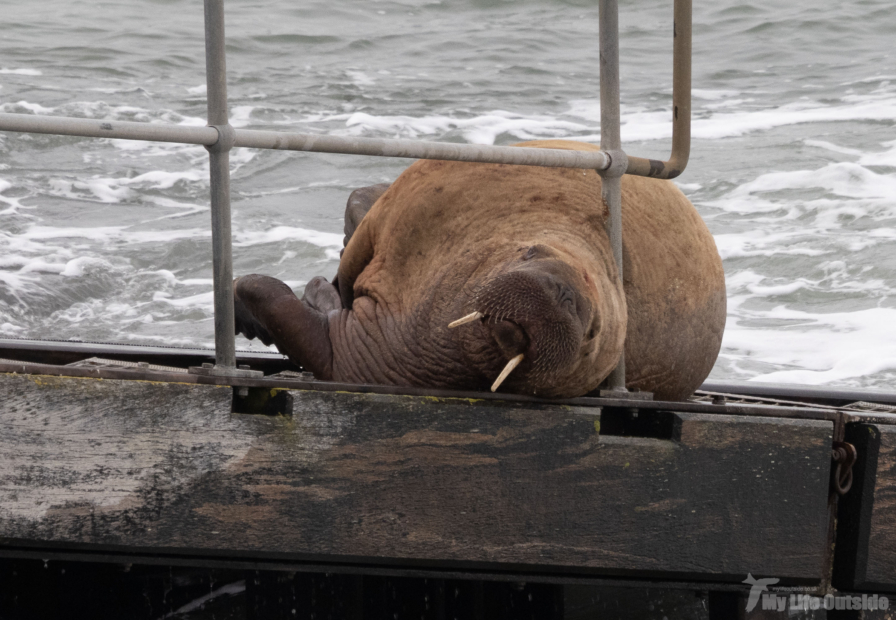
Originally written 16/07/2017
Eas Fors is Mull’s most spectacular waterfall enjoying an unhindered drop directly into the waters of Loch Tuath. Even during a dry spell it makes for an impressive sight but after a full day’s rain? Thunderous is the word.

Although the morning had started a little grey we managed to time our visit perfectly as a lengthy spell of blue sky and sunshine barrelled in on strengthening winds. We’d taken the decision to head down to loch level in order to make full advantage and had the place to ourselves, not that you’d have noticed had an entire brass band piped up. You see the sound of crashing water was just immense, amplified by the fact that there was so much of it coming over the lip that instead of pouring down the rocks as usual the torrent was leaping fully clear only to smash into a rocky outcrop roughly halfway down. This coming together was producing a huge amount of spray, some of which was being blown straight back up and over the top before carrying inland for fifty meters or more. Really quite spectacular, as I may have already mentioned.



On the bird front things were pretty decent as well. We had brilliant if distant views of an adult White-tailed Sea Eagle whilst along the shore a trio of Common Sandpipers were once again playing hard to get. Having seen so many these last few days I’d kind of assumed that by now we’d have stumbled across that one individual which proves unusually tame. Not a bit of it. To the point of paranoia they’d all been incredibly wary meaning that not even a record shot had found its way into my camera. Thankfully nervous sandpipers are the exception however as demonstrated by at least four Terns fishing and diving close in. I’d like to tell you that by now we’ve got the identification between Arctic and Common nailed but the truth is we haven’t opting for the cop-out Commic Tern instead.
After that it was over to Loch na Keal, partly for the view but mostly because I wanted to see some Otters. And by see I didn’t just mean distant views but up close and personal. This is probably going to be the next major area of Mull’s wildlife we’ll work on as by now we’ve got the birds pretty much down and can with a degree of reliability find anything we want. Otters on the other hand remain a mystery with our sightings being sporadic and unreliable. To overcome that there’s nothing for it but field work so we settled down in a sheltered spot and waited. And waited. Clearly this wasn’t going to be easy.

I may have to take some lessons in patience to cure the Otter sized hole in my Mull repertoire but there’s plenty of time for that ahead. For now though the weather was starting to turn decidedly stormy so we copped out and headed for home, stopping off at Torloisk on the way. The beach there is made exclusively from black sand, a by-product of its volcanic surroundings and probably slightly surreal for the first time visitor. I’m sure it’s a lovely place to bathe on a sunny day but I always seem to find myself here staring down an Atlantic gale, this being no exception. At least I was kept warm by a couple of Ringed Plovers which ran me a merry dance from one end of the beach to the other, and it was also good to see a young Great-spotted Woodpecker in nearby woodland.

Since then the weather has really closed in bringing with it more rain and fog. I can no longer see the sea as I write this but at least the other side of the valley is holding on so there’s still hope. Fingers crossed for an improvement tomorrow.



1 Comment
Stewart M · August 6, 2017 at 8:59 am
This is a part of the world I really want to see – but it's a little too far most of the time. So for the time being this will have to do.
Cheers – Stewart M – Melbourne